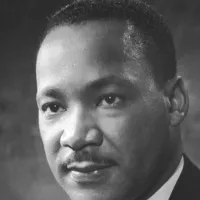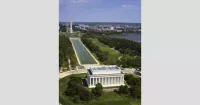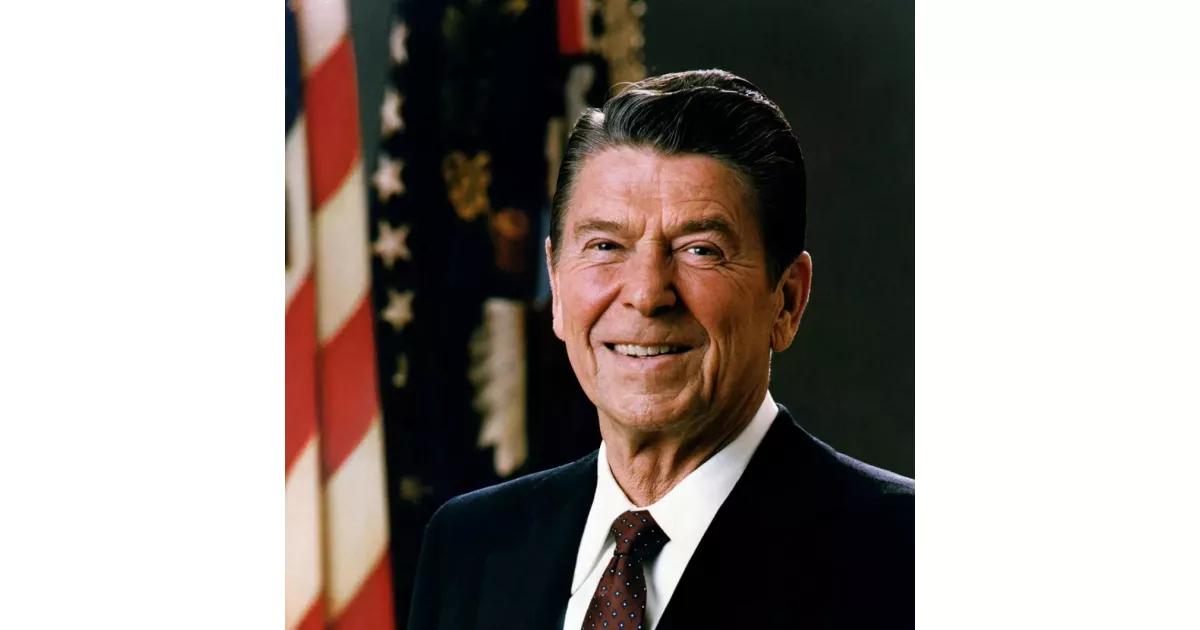Life is full of challenges, and Ronald Reagan faced many. Discover key struggles and how they were overcome.
Ronald Reagan, the 40th U.S. President (1981-1989), was a pivotal figure in the American conservative movement. A Republican, he implemented supply-side economics, dubbed "Reaganomics," which aimed to reduce government spending and taxes to stimulate economic growth. Reagan strengthened the military, challenged the Soviet Union, and is credited by some with helping to end the Cold War. Domestically, he faced challenges like the AIDS epidemic and the Iran-Contra affair. Before his presidency, he was a Hollywood actor and Governor of California.
1968: Planned a run in the Republican presidential primaries
After Reagan won the 1966 election, he and his advisors planned a run in the 1968 Republican presidential primaries. He ran as an unofficial candidate to cut into Nixon's southern support and be a compromise candidate if there were to be a brokered convention. He won California's delegates, but Nixon secured enough delegates for the nomination.
February 5, 1969: Declared a state of emergency at Berkeley
On February 5, 1969, Reagan declared a state of emergency at the University of California, Berkeley in response to ongoing protests and violence, sending in the California Highway Patrol.
May 1969: Clash at People's Park
In May 1969, California Highway Patrol officers, along with local officers, clashed with protestors over People's Park. One student was shot and killed. Reagan commanded National Guard troops to occupy Berkeley for seventeen days.
February 1970: Deployed the National Guard
In February 1970, Reagan deployed the National Guard near the University of California, Santa Barbara, due to violent protests.
1970: Reelection campaign
During his victorious reelection campaign in 1970, Reagan promised to prioritize welfare reform, concerned about the growing welfare rolls.
1970: Gubernatorial election
During the 1970 gubernatorial election, Unruh used Reagan's tax policy against him, claiming it favored the wealthy. Reagan countered that he remained committed to reducing property taxes.
1971: Start of welfare experiment
In 1971, Reagan softened his criticism of Nixon's Family Assistance Plan. Nixon then lifted regulations to shepherd California's experiment.
1972: Tax hike concerns
In 1972, Reagan was concerned about the growing welfare rolls would lead to both an unbalanced budget and another big tax hike.
1974: End of welfare experiment
In 1974, the Employment Development Department published a report suggesting that the welfare experiment that ran from 1971 to 1974 was unsuccessful.
November 20, 1975: Announced presidential campaign
On November 20, 1975, Reagan announced his presidential campaign, discussing economic and social problems, and to a lesser extent, foreign affairs.
1976: Loss in Republican Primaries
In 1976, Ronald Reagan lost to Gerald Ford in the Republican Party presidential primaries.
1976: Welfare experiment deemed unsuccessful
In 1976, the Employment Development Department published a report suggesting that the welfare experiment that ran from 1971 to 1974 was unsuccessful.
1977: Ford discusses Reagan's primary challenge
In 1977, Ford told Cannon that Reagan's primary challenge contributed to his own narrow loss to Democrat Jimmy Carter in the 1976 presidential election.
November 4, 1979: The Iran hostage crisis began
The general election pitted Reagan against Carter amid the multitude of domestic concerns and the ongoing Iran hostage crisis that began on November 4, 1979.
1980: 1980 Campaign Promise
During his time in office, Reagan never fulfilled his 1980 campaign promise of submitting a balanced budget.
1980: Presidential Campaign
Heading into 1980, Reagan's age became an issue among the press, and the United States was in a severe recession.
1980: High percentage of high schoolers using illegal drugs
In 1980, 53 percent of high school seniors using illegal drugs.
1980: Inflation Rate in 1980
In 1980, the inflation rate was at 12 percent.
March 30, 1981: Assassination Attempt
On March 30, 1981, Reagan was shot by John Hinckley Jr. outside the Washington Hilton. He underwent surgery and recovered quickly, and the event created a bond between him and the American people.
July 1981: Recession
In July 1981, the economy experienced a recession.
August 1981: PATCO Strike and Firing
In August 1981, the Professional Air Traffic Controllers Organization (PATCO) went on strike. Reagan responded by firing roughly 12,000 striking air traffic controllers who did not return to work after 48 hours.
1981: Approved plan for Social Security cuts and Omnibus Budget Reconciliation Act of 1981
In 1981, Reagan approved a plan for cuts to Social Security in an effort to keep it solvent. He also signed the Omnibus Budget Reconciliation Act of 1981, cutting funding for federal assistance programs.
1981: Start of AIDS Epidemic
In 1981, the AIDS epidemic began to unfold and was initially difficult to understand for physicians and the public.
1981: National debt percentage
In 1981, the national debt as a percentage of the gross domestic product was 33 percent.
1981: Approval ratings decline due to the 1981-1982 recession.
Ronald Reagan's approval ratings declined by the end of his first year due to the 1981-1982 recession.
December 1982: Unemployment Rate Peak
In December 1982, the unemployment rate was measured at 10.8 percent.
1982: Boland Amendment passed
In 1982, Congress passed the Boland Amendment, prohibiting the CIA and Department of Defense from using their budgets to aid the Contras in Nicaragua.
1982: Intensified War on Drugs
In 1982, Reagan intensified the war on drugs in response to concerns about the increasing crack epidemic.
1982: Signed the Tax Equity and Fiscal Responsibility Act of 1982
In 1982, Reagan signed the Tax Equity and Fiscal Responsibility Act to address the growing federal debt. The act increased the federal cigarette tax and rescinded parts of the 1981 corporate tax cuts.
1982: Impeding Soviet Access to Hard Currency
In 1982, Reagan tried to cut off the Soviet Union's access to hard currency by impeding its proposed gas line to Western Europe, which hurt the Soviet economy but also caused ill will among American allies.
1982: Approval ratings decline due to the 1981-1982 recession.
Ronald Reagan's approval ratings declined in his second and third years, which has been attributed to the 1981–1982 recession.
1982: Garn–St. Germain Depository Institutions Act
The 1982 Garn–St. Germain Depository Institutions Act deregulated savings and loan associations, leading to riskier activities and contributing to the savings and loan crisis.
October 19, 1983: Overthrow and murder of Maurice Bishop
On October 19, 1983, Maurice Bishop was overthrown and murdered by one of his colleagues, leading to increased instability in Grenada.
1984: Federal spending on AIDS
Between the fiscal years of 1984 and 1989, federal spending on AIDS totaled $5.6 billion.
September 1985: Reagan calls AIDS research a "top priority"
In a September 1985 press conference, following Rock Hudson's AIDS diagnosis announcement, Reagan called a government AIDS research program a "top priority", while also citing budgetary constraints.
September 18, 1985: Reagan does not mention AIDS in public
Between September 18, 1985, and February 4, 1986, Reagan did not mention AIDS in public.
1985: Crack became widespread
After crack became widespread in 1985, Reagan's administration publicized the campaign to gain support for the war on drugs.
1985: Fall in oil prices impacts Soviet economy
In 1985, the prices of oil, the primary source of Soviet export revenues, fell to one third of the previous level, contributing to a stagnant economy during Mikhail Gorbachev's leadership.
1985: Imposition of new sanctions on South Africa
In late 1985, Reagan announced the imposition of new sanctions on the South African government, including an arms embargo, but these were viewed as weak by anti-apartheid activists.
February 4, 1986: Reagan does not mention AIDS in public
Between September 18, 1985, and February 4, 1986, Reagan did not mention AIDS in public.
April 5, 1986: West Berlin discotheque bombing
On April 5, 1986, the West Berlin discotheque bombing, which killed an American soldier and injured others, revived contentious relations between Libya and the United States under President Reagan.
November 1986: Iran-Contra Affair exposed
In early November 1986, the Iran-Contra transactions were exposed by Ash-Shiraa, leading to initial denials from Reagan, followed by announcements of resignations and investigations.
1986: Congress approves Comprehensive Anti-Apartheid Act
In 1986, Congress approved the Comprehensive Anti-Apartheid Act, which included tougher sanctions, overriding Reagan's veto.
1986: Reagan requests report on AIDS
In 1986, Reagan tasked C. Everett Koop with developing a report on AIDS, leading to recommendations for sex education and condom usage, which angered some conservatives.
1986: Anti-Drug Abuse Act of 1986 signed
Reagan signed the Anti-Drug Abuse Act of 1986, which specified penalties for drug offenses.
February 1987: Release of the Tower Commission report
In February 1987, the Tower Commission released its report confirming the administration had traded arms for hostages and sent the proceeds to the Contras, damaging Reagan's credibility and raising questions about his competency.
May 17, 1987: Iraqi jet hits USS Stark
On May 17, 1987, during the Tanker War, an Iraqi fighter jet hit the USS Stark with two Exocet missiles, killing 37 sailors.
1988: Signed the Anti-Drug Abuse Act of 1988 and Study on illegal drug use
In 1988, Reagan signed the Anti-Drug Abuse Act of 1988 to specify penalties for drug offenses and a study showed 39 percent of high school seniors using illegal drugs compared to 53 percent in 1980.
1989: Federal spending on AIDS
Between the fiscal years of 1984 and 1989, federal spending on AIDS totaled $5.6 billion.
1989: BLS Measures Unemployment
By 1989, the BLS measured unemployment at 5.3 percent, while both economic inequality and homelessness increased during the 1980s.
1989: National Debt Percentage of GDP
By 1989, the national debt as a percentage of the gross domestic product rose to 53 percent.
1992: Possible onset of Alzheimer's symptoms
Medical experts say that Ronald Reagan first began exhibiting overt symptoms of Alzheimer's illness in late 1992.
1993: Possible onset of Alzheimer's symptoms
Medical experts say that Ronald Reagan first began exhibiting overt symptoms of Alzheimer's illness in 1993.
August 1994: Reagan diagnosed with Alzheimer's disease
In August 1994, Ronald Reagan was diagnosed with Alzheimer's disease, which he announced in November through a handwritten letter.
1994: Diagnosis with Alzheimer's Disease
In 1994, Ronald Reagan was diagnosed with Alzheimer's disease, which impacted his post-presidency.
1997: Reagan recognizes few people
By 1997, it was reported that Ronald Reagan recognized few people other than his wife, due to Alzheimer's disease.
2003: Reagan loses ability to speak and is mostly confined to his bed
By the end of 2003, Ronald Reagan had lost his ability to speak and was mostly confined to his bed, no longer able to recognize family members due to Alzheimer's.
Mentioned in this timeline

Martin Luther King Jr was a pivotal leader in the...
California is a U S state on the Pacific Coast...

The stock market serves as a platform where buyers and...
The Union of Soviet Socialist Republics USSR existed from to...

Washington D C is the capital city and federal district...
Africa is the second-largest and second-most populous continent comprising of...
Trending
2 months ago Wole Soyinka's US Visa Revoked: Nobel Laureate Speaks Out Against Travel Ban.

7 months ago Russell Brand Denies Rape and Sexual Assault Allegations, Pleads Not Guilty in Court

Chase Young is a professional football defensive end currently playing for the New Orleans Saints in the NFL He gained...

5 months ago Venus Williams, 45, returns to professional tennis with DC Open wild card.

1 month ago Ja'Marr Chase Suspended One Game: Spitting Incident Sparks Controversy, Appeal Pending

9 months ago Red Sox-Cardinals Game Postponed; Doubleheader Scheduled Due to Rain on Sunday.
Popular

Tucker Carlson is an American conservative political commentator known for...

Candace Owens is an American conservative political commentator and author...

XXXTentacion born Jahseh Dwayne Ricardo Onfroy was a controversial yet...

Ben Shapiro is a prominent American conservative political commentator media...

William Franklin Graham III commonly known as Franklin Graham is...

Bill Gates an American businessman and philanthropist revolutionized personal computing...
